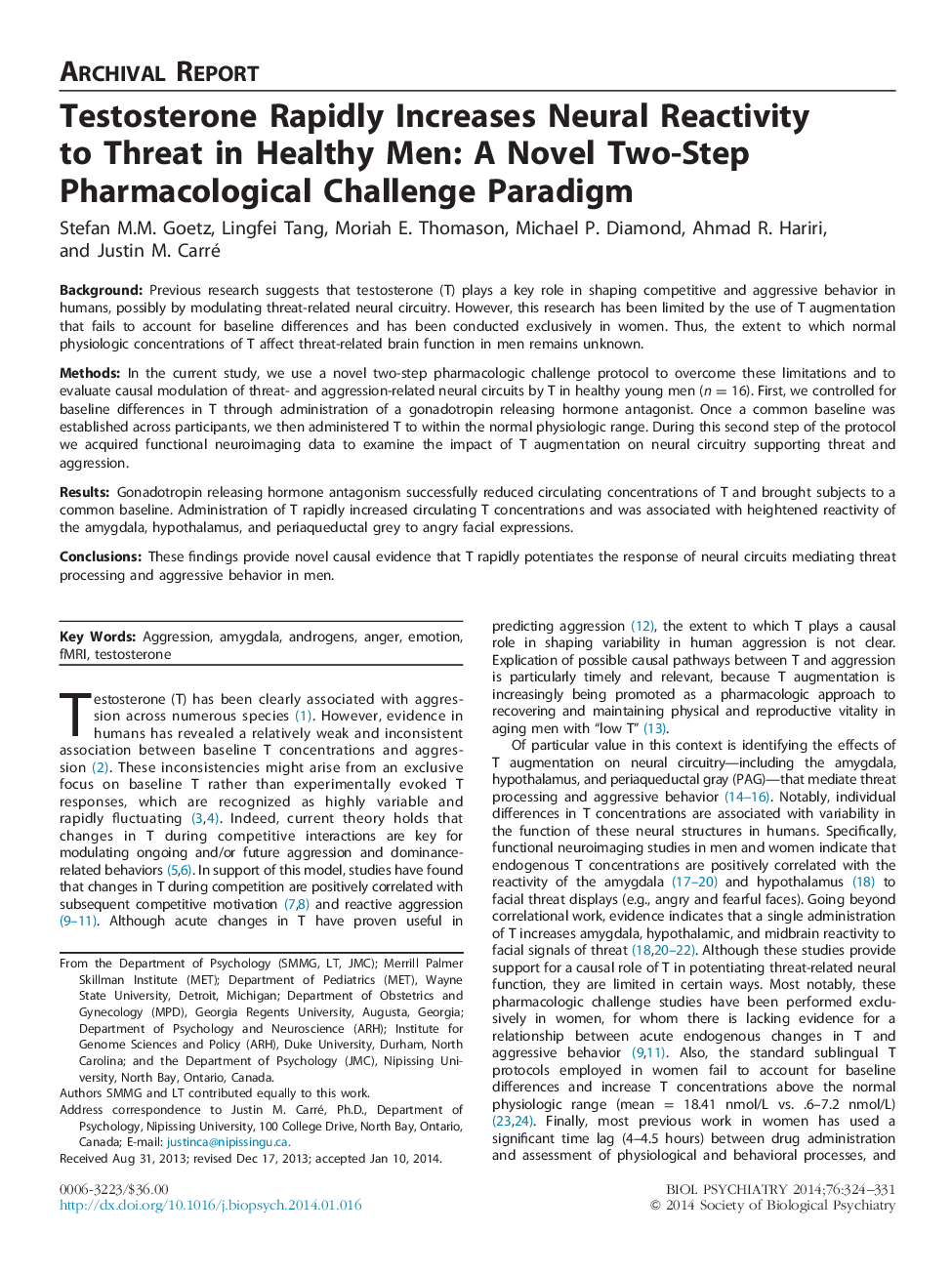| Article ID | Journal | Published Year | Pages | File Type |
|---|---|---|---|---|
| 4177443 | Biological Psychiatry | 2014 | 8 Pages |
BackgroundPrevious research suggests that testosterone (T) plays a key role in shaping competitive and aggressive behavior in humans, possibly by modulating threat-related neural circuitry. However, this research has been limited by the use of T augmentation that fails to account for baseline differences and has been conducted exclusively in women. Thus, the extent to which normal physiologic concentrations of T affect threat-related brain function in men remains unknown.MethodsIn the current study, we use a novel two-step pharmacologic challenge protocol to overcome these limitations and to evaluate causal modulation of threat- and aggression-related neural circuits by T in healthy young men (n = 16). First, we controlled for baseline differences in T through administration of a gonadotropin releasing hormone antagonist. Once a common baseline was established across participants, we then administered T to within the normal physiologic range. During this second step of the protocol we acquired functional neuroimaging data to examine the impact of T augmentation on neural circuitry supporting threat and aggression.ResultsGonadotropin releasing hormone antagonism successfully reduced circulating concentrations of T and brought subjects to a common baseline. Administration of T rapidly increased circulating T concentrations and was associated with heightened reactivity of the amygdala, hypothalamus, and periaqueductal grey to angry facial expressions.ConclusionsThese findings provide novel causal evidence that T rapidly potentiates the response of neural circuits mediating threat processing and aggressive behavior in men.
